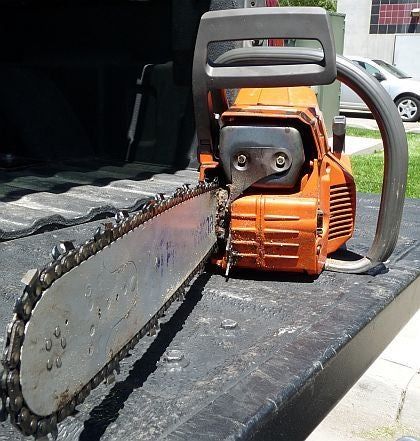Owning a chainsaw can be a game-changer for homeowners and professionals alike, offering unparalleled efficiency for a variety of outdoor tasks. From clearing fallen trees after a storm to preparing firewood for the winter, a chainsaw can save significant time and effort compared to manual tools. However, this powerful piece of machinery also comes with its own set of considerations, including safety risks, maintenance requirements, and initial costs. Before investing in a chainsaw, it’s crucial to weigh both the advantages and disadvantages to determine if it’s the right tool for your needs.
The Pros of Chainsaw Ownership
Efficiency and Speed
One of the most compelling reasons to own a chainsaw is its incredible efficiency. What might take hours or even days with a handsaw or axe – such as felling a medium-sized tree or processing a large log – can often be accomplished in minutes with a chainsaw. This speed is invaluable for large-scale yard work, property maintenance, or emergency tree removal.
Versatility
Chainsaws are remarkably versatile. Beyond felling trees, they are excellent for limbing (removing branches), bucking (cutting logs into smaller sections), and clearing brush. Smaller, lighter models are suitable for pruning and light yard work, while larger, more powerful saws are designed for heavy-duty tasks like professional logging or clearing large tracts of land.
Cost Savings
While there’s an initial investment in purchasing a chainsaw, it can lead to significant long-term savings. Instead of hiring professional tree services for every fallen branch or firewood need, you can handle many tasks yourself. This is particularly beneficial for those with larger properties or frequent needs for wood cutting.
Empowerment and Self-Sufficiency
For many, owning and operating a chainsaw provides a sense of empowerment and self-sufficiency. Being able to tackle challenging outdoor projects independently, without relying on external services, can be very rewarding. It allows for immediate action when a tree falls or when firewood is needed, rather than waiting for professional availability.
The Cons of Chainsaw Ownership
Significant Safety Risks
This is arguably the most critical drawback. Chainsaws are inherently dangerous tools capable of causing severe injuries, including deep lacerations, amputations, and even fatalities. Kickback, where the saw unexpectedly jerks back towards the operator, is a major hazard. Proper safety gear (helmet, eye protection, hearing protection, chaps, gloves, steel-toed boots) and extensive training are absolutely essential, but even then, risks remain.
Maintenance and Fuel Requirements
Chainsaws, especially gasoline-powered models, require regular maintenance to operate safely and efficiently. This includes sharpening the chain, checking chain tension, cleaning the air filter, replacing spark plugs, and ensuring proper lubrication. They also require a steady supply of fuel (gasoline and two-stroke oil mix for gas models) and bar oil, adding to the ongoing operational costs and effort. Electric and battery-powered models reduce fuel needs but still require chain and bar maintenance.
Noise and Emissions
Gas-powered chainsaws are notoriously loud, often exceeding safe decibel levels, necessitating hearing protection. They also produce exhaust fumes, contributing to air pollution and requiring good ventilation when used. While electric models are quieter and produce no emissions, they might lack the power or run-time needed for heavy-duty tasks.
Initial Cost and Storage
The upfront cost of a quality chainsaw, especially a powerful gas model, can be substantial. This cost is further increased when factoring in essential safety gear, fuel cans, and maintenance supplies. Additionally, chainsaws require proper, secure storage to protect them from the elements and prevent unauthorized use, which might be a consideration for those with limited space.
Learning Curve
Operating a chainsaw safely and effectively requires more than just reading a manual. There’s a significant learning curve involved in understanding proper cutting techniques, tree felling mechanics, and how to react to unexpected situations. Without adequate training and practice, the risk of accidents increases dramatically.
Conclusion
Owning a chainsaw offers undeniable advantages in terms of efficiency, versatility, and cost savings for various outdoor tasks. However, these benefits must be carefully weighed against the substantial safety risks, ongoing maintenance demands, and initial investment. For those who are committed to rigorous safety protocols, proper training, and consistent maintenance, a chainsaw can be an invaluable asset. For others, particularly those with infrequent or light cutting needs, hiring a professional or opting for manual tools might be a safer and more practical choice. Ultimately, the decision hinges on your specific needs, experience level, and willingness to prioritize safety above all else.

